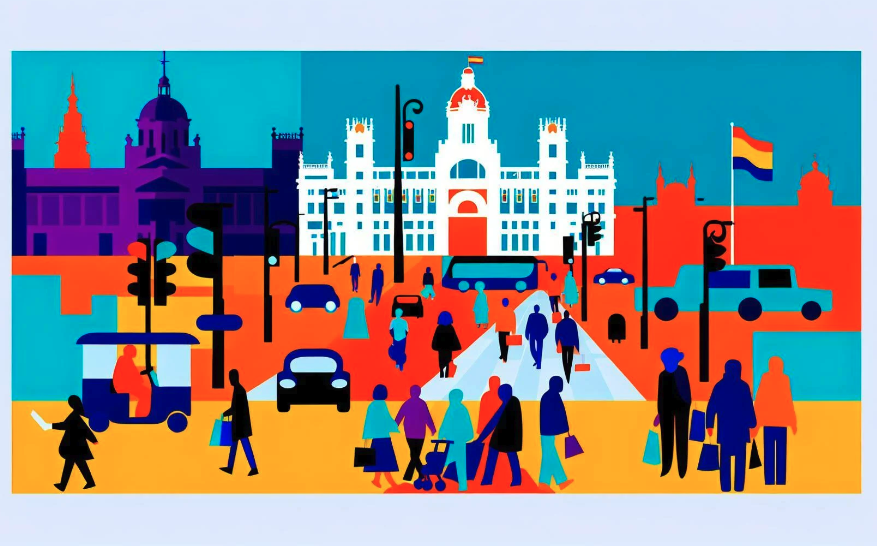. .
BLOG
Celebrating the Year of the Dragon: Tradition, Culture and International Collaboration

In many cultures, few symbols are as powerful as the dragon . In the Chinese cultural horizon, the dragon is not just a myth or a legend, but an emblem of strength, good fortune and transformation. In this 2024, with the advent of the Year of the Dragon, we immerse ourselves in a period that promises renewal and ambition , reflecting the intrinsic characteristics of this majestic creature.
Today, on our LFM blog, we decided to celebrate the Chinese New Year together, celebrating the arrival of the Year of the Dragon. In fact, for years our company has collaborated with Chinese companies including Huawei, Xiaomi, Oppo, Realme and we are proud to celebrate this important moment with them. Let’s now discover together the origins of this mysterious and fascinating figure.
Origins and Meaning of the Year of the Dragon
At the heart of East Asia’s most ancient and fascinating traditions, the Year of the Dragon stands out as one of the most significant and symbolic periods in the Chinese lunisolar calendar. This celebration is not only a time of annual renewal but also a bridge from the mystical past to modernity, embodying hopes, dreams and the relentless pursuit of excellence.
The dragon, in Chinese mythology, is a creature of extraordinary power and divinity , unlike its representation in many Western cultures, where it often appears as an enemy to be defeated. In China, the dragon is a symbol of strength, wisdom, prosperity and good fortune . It is considered the most powerful of the zodiac signs, a bringer of positive change and abundance. Its image is omnipresent in Chinese culture: from ancient temples to modern works of art, from folk tales to national celebrations, the dragon permeates every aspect of life, offering protection, blessings and guidance.

Chinese Zodiac Cycle
The origins of the dragon in Chinese culture are lost in the mists of time, mixing history and mythology. According to some legends, the dragon was one of the totemic animals of the ancient clans that founded Chinese civilization. Its figure was then elevated to a symbol of imperial authority, so much so that the emperor of China was often described as a descendant of the celestial dragon. This imperial veneration further strengthened the role of the dragon as an emblem of supreme power and divine legitimacy.
The Year of the Dragon occurs every twelve years in the Chinese zodiac cycle and is greeted with great excitement and anticipation. Being born under the sign of the Dragon is believed to bring traits of leadership, ambition, courage, and good fortune. Dragons are seen as pioneers and visionaries , capable of tackling challenges with confidence and determination. As a result, Dragon years are often associated with increased birth rates, as many families wish for their children to be born under this auspicious sign.
Research indicates that during Dragon years there is often a significant increase in birth rates compared to other years. A notable example was the Dragon year of 1988 , which saw a clear spike in births. Similar increases have also been observed in subsequent Dragon years, such as 2000 and 2012.
Scholars have used demographic data to analyze these trends, noting that such birth spikes are not limited to mainland China but also occur in other societies with significant ethnic Chinese populations, such as Taiwan, Singapore, and Hong Kong. However, it is important to note that the impact of the Year of the Dragon on birth rates can vary depending on several factors, including government population policies, economic conditions, and cultural changes.

The celebration of the Year of the Dragon is marked by numerous rituals and traditions that aim to invoke good fortune and ward off evil spirits. Dragon parades, in particular, are a spectacle not to be missed, with elaborate dances that see participants maneuver enormous dragon figures through the streets, to the sound of drums and cymbals. These events not only demonstrate respect and devotion to the dragon but also serve to strengthen the social fabric of communities, uniting people in a shared celebration of hope and renewal. And speaking of parades to celebrate the Chinese New Year, we cannot fail to mention the one in Milan that will take place this Sunday.
Chinese New Year in Milan
Chinese New Year falls on Saturday, but the big Milanese celebration is scheduled for Sunday at the Arco della Pace and no longer in Chinatown as it once was.

The streets of Milan will be dressed in red and gold, colors that symbolize luck and prosperity, welcoming both Milanese and visitors in a festive and inclusive atmosphere. The celebrations will include spectacular parades, with the traditional dragon and lion dance that wind through the most emblematic neighborhoods of the city, bringing with them music, energy and good wishes for the new year.
There will also be traditional food tastings, offering a taste of the rich Chinese cuisine, with dishes that carry auspicious meanings and stories of ancient traditions. Thematic markets, cultural workshops, martial arts performances and Chinese art exhibitions will further enrich the program, offering participants the opportunity to fully immerse themselves in Chinese culture, discovering its values, practices and aesthetics.
All that remains for us to do is prepare to celebrate the arrival of this new year and to do so we share with you some of the most popular greetings in Chinese tradition.
One of the most typical and popular greetings in China for the arrival of the new year is “新年快乐 (Xīnnián kuàilè)”, which means “Happy New Year”. This greeting is widely used during the Chinese New Year celebrations and can be found on greeting cards, messages and exchanged between friends, family and acquaintances during the holidays.
Another very common wish, which emphasizes the wish for prosperity and success, is “恭喜发财 (Gōngxǐ fācái)”, which translates to “Best wishes and get rich” or more loosely “I wish you wealth and success”. This wish is especially popular during New Year’s visits, when people exchange red envelopes containing money (红包, hóngbāo) as a sign of good luck and prosperity for the coming year.
So to all of you “新年快乐 (Xīnnián kuàilè)” and 恭喜发财 (Gōngxǐ fācái)!!!
Recent posts
- All Post
- Area manager
- Best Employee
- Business Intelligence
- Education
- Eventi
- Intelligenza artificiale
- LFM University
- Metaverso
- Points of sales
- Retail
- Sponsorship
- Tour Operator




